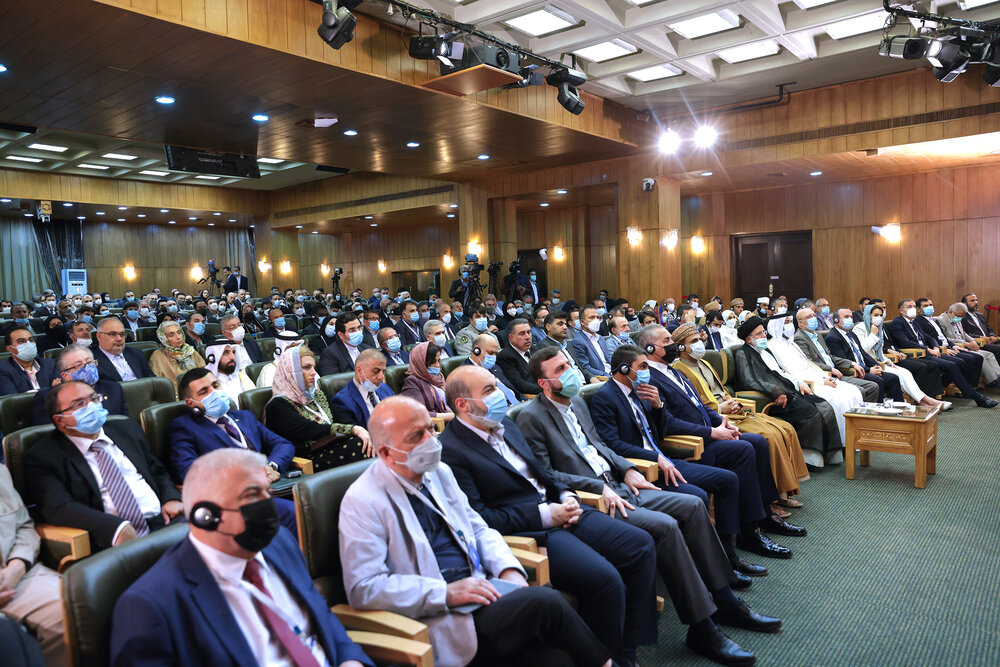Wait and see what regional meeting on dust storms will produce

TEHRAN – Iran’s Department of Environment (DOE) hosted on Tuesday a conference of 11 regional countries to find solutions for major environmental problems, particularly sand and dust storms (SDSs).
Environment ministers of Iraq, Armenia, the United Arab Emirates, Oman, Syria, and Qatar, deputy environment ministers of Azerbaijan and Turkmenistan along with delegates from Turkey and Uzbekistan participated in the conference.
However, what this meeting will produce is an open question.
Unfortunately, one cannot pin much hope on such conferences. Participants in such meetings usually ignore what their country commits to doing, or they are overwhelmed by those on the top.
Even the entire world is far behind the targets set by the 2015 Paris climate accord in reducing greenhouse gas emissions. For example, the United States as the second biggest emitter quit the climate agreement when Trump was in the White House. He even called the global warming a hoax invented by the Chinese to hurt the U.S. economy.
Experts say Iraq, Syria, and Saudi Arabia are the chief sources of sand and dust storms. However, Syria is not a good shape and dust storms are not its priority. Moreover, most of its population is located in areas that are not exposed to SDSs.
Iraq is now in a much better situation after it succeeded to defeat Daesh (ISIS), but whether it will take care of dust storms is an important question.
Saudi Arabia, one of the main three sources of dust storms, was not even represented in the Tehran conference. It is very likely that it had been invited to attend but it has refused.
Turkey, which has constructed huge dams on the Tigris and Euphrates rivers, is highly unlikely to allow a natural flow of water into Iraq and Syria which had been in work since the creation of the Earth. In fact, Turkey has launched a war against nature through its excessive redirection of water. Turkey’s move, coupled with repeated droughts, have turned Iraq and Syria into two main hotbeds of dust storms in the region.
The wars in Iraq and Syria had also deflected attention from environmental issues.
Iran, which also says about 80 percent of dust storms have a foreign origin, is itself to the blame. Its mismanagement of water resources and cultivation of water-intensive crops have dried up rivers and turned thousands of hectares of land into deserts or centers of dust. However, Iran’s move to invite environment chiefs from regional countries to gather in Tehran to address the issue may be a sign of hope that officials in the country have realized that dust storms, which have become more recurrent, are wreaking havoc on Iranian citizens’ health.
Probably, among the countries which may be serious to address this pressing issue are Kuwait, Qatar, and the UAE.
Before the situation becomes more worse, every single country in West Asia, internationally known as the Middle East, must do its best to counter the consequences of dust storms otherwise they will pay a much heavier cost.
According to a 2019 report from the World Bank, the Middle East and North Africa (MENA) loses about $13 billion a year to the effects of sandstorms, from the costs of clean-up and recovery to treating health problems and a decline in productivity.
Instead of rivalry and conflict, regional countries must join hands to control the SDSs. Using the experience of other countries and seeking the expertise of international experts is a necessity. If SDSs are not controlled, they will not remain just limited to West Asia and they will continue to reach other countries one after another.
The Kingdom of Saudi Arabia must also act responsibly given its large expanse and fortune. Until this date, most Saudi population is immune from dust storms. However, how long this will persist depends on many things. It is extremely hoped that Riyadh will realize the gravity of the situation.
Leave a Comment